Most runners know that stretching should be part of the recovery routine but often it’s done incorrectly, too quickly or not regularly. Flavia Breu (BSc Physiotherapy Switzerland) explains why stretching is important not only to prevent injuries but also to increase strength and running performance and shares her six most important stretches.
A skeletal muscle is a very complicated organ built out of many bundles of muscle fibers, held together by fascia and connected to the bones by tendons.
It gets its ability to contract and relax by gliding of protein filaments in each muscle fiber. This gliding of the filaments against each other is essential for normal muscle function. The filaments can get stuck in the contracted position during long and/or strong activities like running which leads over time to:
- Shortened muscles and therefore less mobility in the adjoining joints which leads to restricted running stride, decreased running performance and/or joint pain
- Painful tight muscle bands and trigger points
- Tendinitis or fasciitis from continuous pull at the tendon/fascia through the shortened muscle
- Muscle weakness not only in the tight muscle, but also in its partner muscles working together in functional chains or as agonists/antagonists.
A regular short stretching routine after each run (see below for instructions) and a longer one on recovery days can prevent above complications and vicious cycles.
The most important rules for correct stretching:
- Take your time! Start the stretch with a gentle pull and increase slowly.
- Hold the stretch for at least 30 seconds or until the stretch sensation eases. The fibers need a long time to loosen up and adjust to the regained length. Otherwise they bounce right back.
- Breath regularly. If you have to hold your breath the pull is too much and you might injure the muscle.
- If you want you can start a stretch by gently moving in and out of it before you hold it for 30 seconds in the same position, but it’s not necessary.
My top 6 stretches to prevent the most common running injuries:
Plantar Fasciitis
Curl the toes under and sit back on your heels.
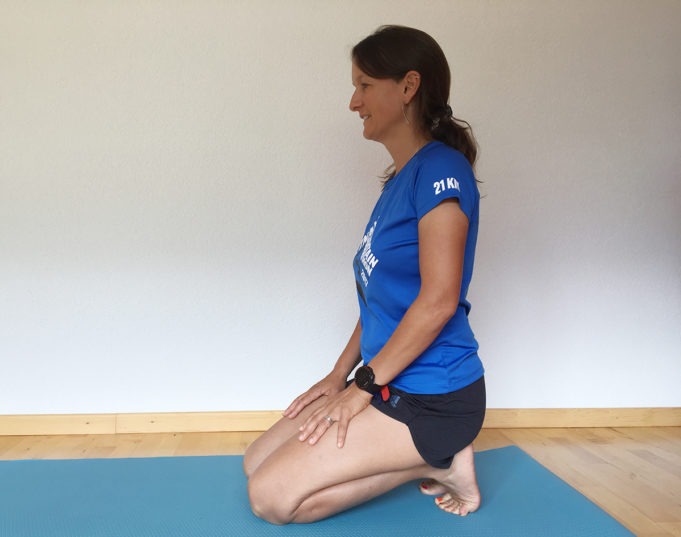

Shin splint
Put the feet flat, sit back on your heels and lean back until the knees are coming off the floor.
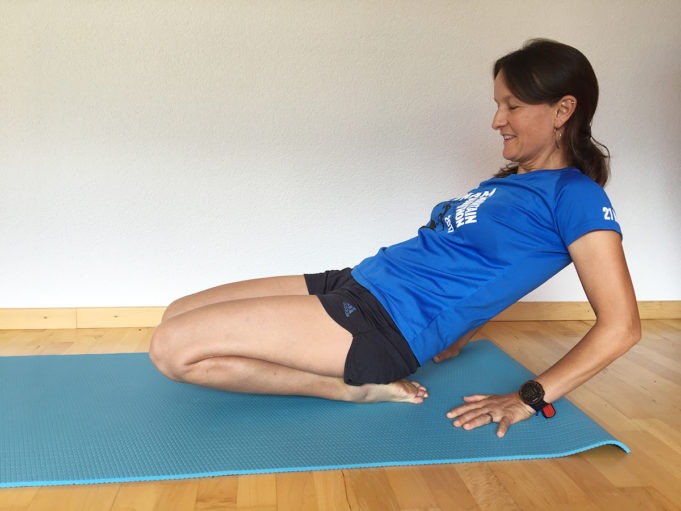

Achilles tendinitis
Put one foot up against a block, roller or sidewalk. Keep the heel on the floor, the knee straight and take a step to the front with the other leg. Lean forward until you feel a stretch in the calf. After 30 seconds keep the foot in the same position, but bend the knee. You will feel the stretch deeper in your calf. Hold the stretch again for at least 30 seconds
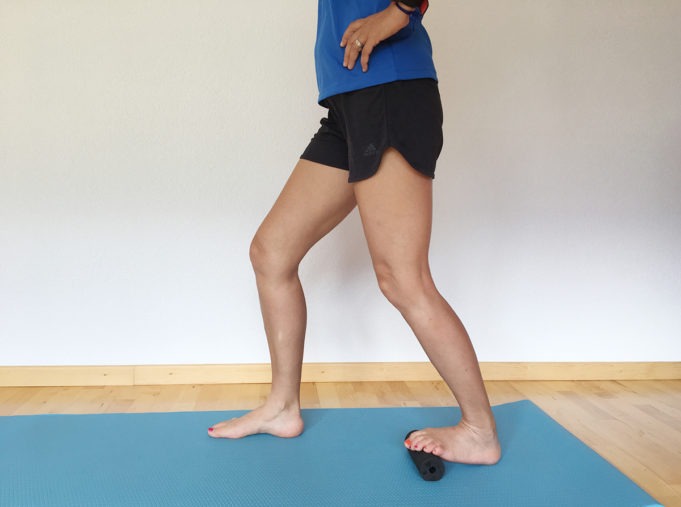

Knee and hip pain
Start in a low lunge hip flexor stretch and bend the back knee. Hold it with the opposite hand. You will feel the stretch in your Quadriceps (front thigh). Try to find the position with the most stretch by shifting sideways or even twisting your upper body. Put a cushion under your knee if the pressure is too much.
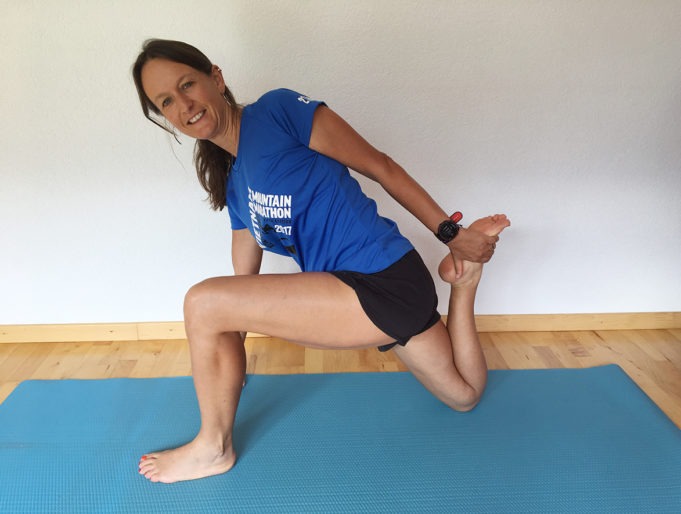

Use a rope or exercise band to pull up your straight leg. Stay 30 seconds in the middle position where you feel the stretch in the back of your leg (hamstrings and calf muscles), then slowly move the straight leg across the midline until you feel the stretch more on the outer side of your leg (IT band).
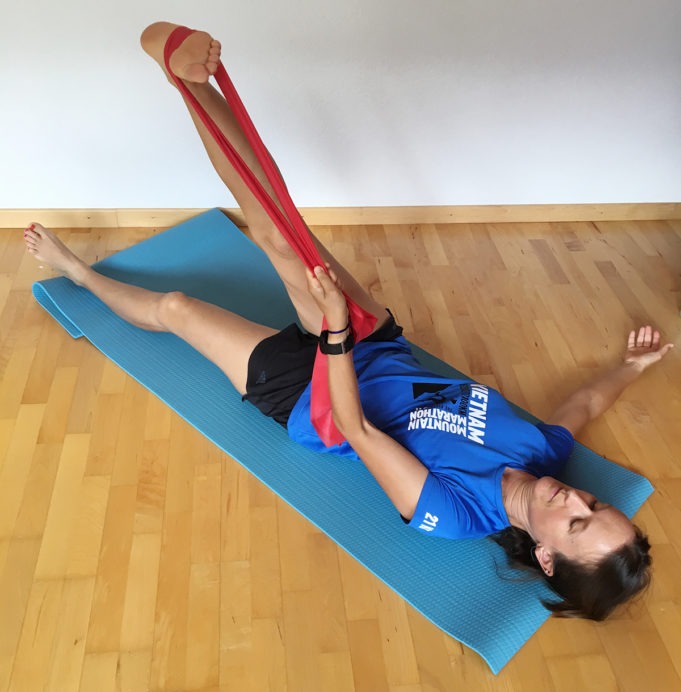

Put your foot on the opposite knee in a figure 4 position and pull the leg towards you. You might want to shift your pelvis from side to side to find the position with the most stretch in your glutes.
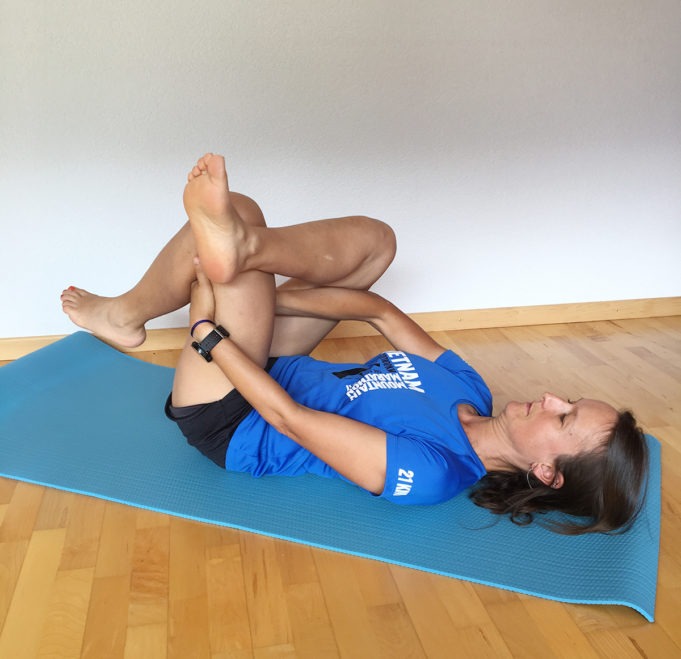

Leading up to VMM Flavia is offering stretching sessions (max 8 participants) 3 times a week (Monday 8am, Wednesday 7pm and Friday 1pm) at her clinic on To Ngoc Van in Tay Ho.
Contact her on 0936135368 or at flavia_breukobler@yahoo.com. Find more information about Flavia and her work at www.physioactive-hanoi.com



